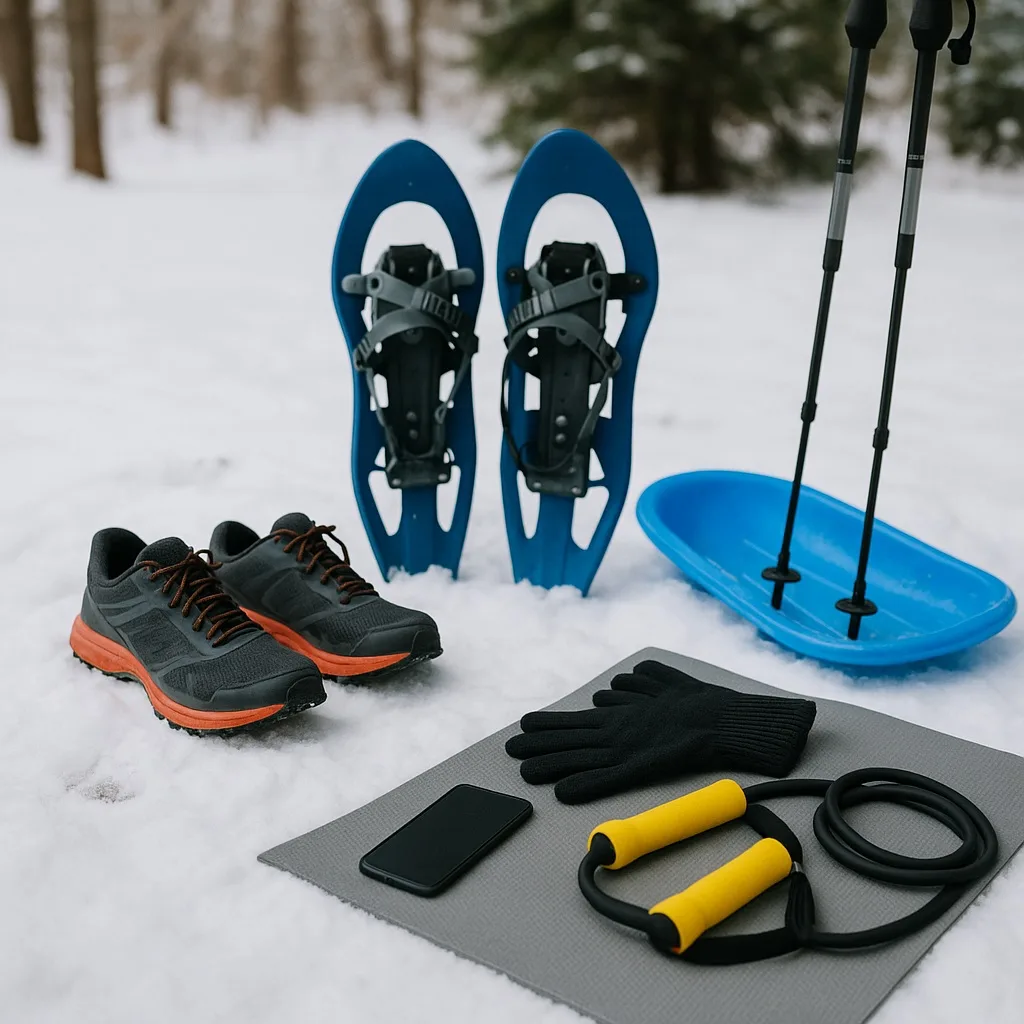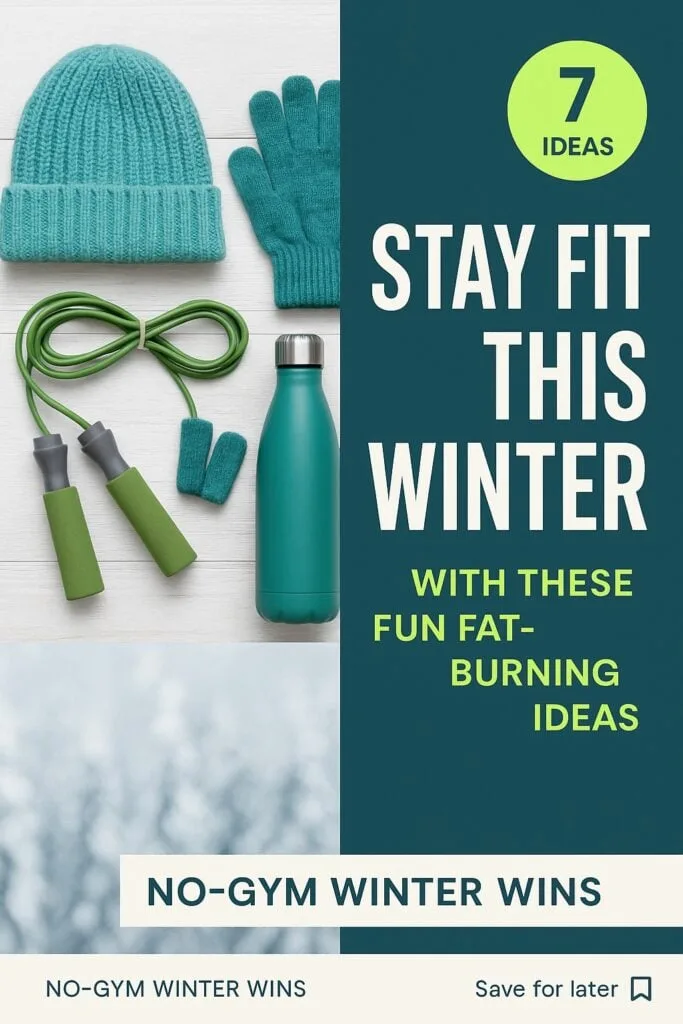Winter Fat-Burning Activities:
When the days get shorter and the air turns icy, it’s tempting to curl up with a blanket and let workouts slide.
But here’s the thing—winter is actually one of the best times to burn fat. Cold weather forces your body to work harder to stay warm, which can increase calorie burn.
And with the right activities, you’ll torch calories while having fun, not just slogging through a treadmill session.
Whether you love the outdoors or prefer staying cozy inside, there are plenty of fat-burning moves that fit the season perfectly.

1. Snowshoeing for Serious Calorie Burn
Snowshoeing may not be as flashy as skiing, but it’s one of the most underrated winter workouts.
The uneven terrain and deep snow mean your muscles have to work harder than they would on a regular hike.
That constant resistance challenges your legs, glutes, and core while sending your heart rate soaring.
Plus, it’s low-impact, so it’s easier on the joints than running on icy streets. Even a slow pace can burn 400–600 calories per hour, and if you pick up speed, it can easily cross the 800 mark.
Grab a pair of snowshoes, layer up, and you’ve got yourself a killer fat-burning adventure.
2. Ice Skating for Balance and Burn
Few activities feel as joyful as gliding across an ice rink with music playing in the background.
But don’t let the fun fool you, ice skating is a serious workout. Your legs, especially the quads and glutes, do the heavy lifting, while your core fires up to keep you balanced.
Skating for just 30 minutes can burn between 250 and 500 calories, depending on intensity.
The bonus? It doesn’t feel like a workout because you’re too busy having fun. If you’re new, consider wearing protective pads, and try adjustable beginner skates so you can ease into the activity without breaking the bank.
3. Cross-Country Skiing: The Ultimate Winter Fat-Burner
Cross-country skiing might just be the gold standard of winter fat-burning activities.
It’s a full-body workout, legs push, arms pull, and your lungs keep up with the rhythm.
Studies show it burns more calories per hour than running, cycling, or even swimming, with numbers ranging from 600 to 900 depending on terrain and pace.
The steady motion also builds endurance while strengthening stabilizer muscles you didn’t know you had.
If you’re serious about making winter workouts count, investing in cross-country skis could be the best fitness decision of the season.
4. Winter Hiking for Endurance and Strength
Hiking isn’t just a summer hobby. Bundle up, strap on some sturdy boots, and winter hiking becomes one of the most effective fat-burning activities.
The colder air forces your body to work harder to regulate temperature, and the added resistance of snow or icy trails ups the calorie burn significantly.
Plus, uneven winter terrain challenges your balance and strengthens stabilizing muscles.
A moderate winter hike can burn 400–700 calories per hour, depending on elevation. Bring along trekking poles and a pair of thermal hiking socks to keep feet warm and blister-free.
Just remember—safety first: check trail conditions before heading out.
5. Indoor HIIT Workouts for Quick Burn
If icy roads or heavy snow keep you indoors, you can still torch fat right in your living room.
High-Intensity Interval Training (HIIT) combines short bursts of effort (think burpees, jump squats, or mountain climbers) with rest periods to maximize calorie burn in less time.
A 20-minute HIIT session can burn as many calories as an hour-long jog, and the afterburn effect keeps your metabolism elevated even after you stop.
All you need is a yoga mat, maybe a pair of resistance bands, and a little determination. It’s fast, sweaty, and perfect for busy winter days.
6. Shoveling Snow: The Sneaky Full-Body Workout
It may feel like a chore, but shoveling snow is a serious calorie burner.
Between lifting, twisting, and pushing heavy snow, you’re essentially doing functional strength training combined with cardio.
Depending on body weight and intensity, shoveling can burn anywhere from 400 to 600 calories per hour. The movement engages arms, shoulders, legs, and especially your core.
To make it safer and more effective, use an ergonomic snow shovel that reduces strain on your back. Just pace yourself and take breaks, because while it’s great for fitness, it’s no joke physically.
7. Winter Running: Cold Air, Hot Burn
Running in the cold feels different. Your lungs sting a little at first, your cheeks flush fast, but your body quickly adjusts, and the calorie burn goes through the roof.
Because your body has to keep warm and fuel your muscles, you’ll burn more calories than during a summer jog.
A steady 30–45 minute run on snowy terrain can burn 500–800 calories, depending on intensity.
The key? Dress smart. Layer breathable moisture-wicking fabrics and protect your hands with thermal running gloves.
Once you push past the first chilly minutes, running in crisp winter air can feel almost meditative.
8. Sledding With the Family: Fun That Counts
Who knew childhood fun doubled as a fat-burning workout? Walking uphill while dragging a sled is basically interval training in disguise.
Each climb works your legs, glutes, and core, while the ride down gives you a quick break before you repeat it all over again.
An hour of sledding with kids or friends can burn 400–600 calories without feeling like exercise at all.
If you don’t already own one, consider grabbing a durable snow sled for the season. It’s playful, social, and one of the few workouts where laughter is guaranteed.
Final Thoughts + Winter Fitness Hacks
Winter doesn’t have to mean sluggish routines or extra pounds creeping in.
Whether you’re hiking frozen trails, squeezing in a quick HIIT session, or just making snow removal count, each activity helps keep fat at bay while making the season more enjoyable.
If you’re short on time, even 20–30 minutes of daily movement can help balance out hearty winter meals.
Keep a stash of warm gear handy, invest in multipurpose tools like adjustable resistance bands, and remember: consistency matters more than perfection. Fitness in winter is about movement, not strict rules.
Stay active, stay warm, and let winter work for you instead of against you.

